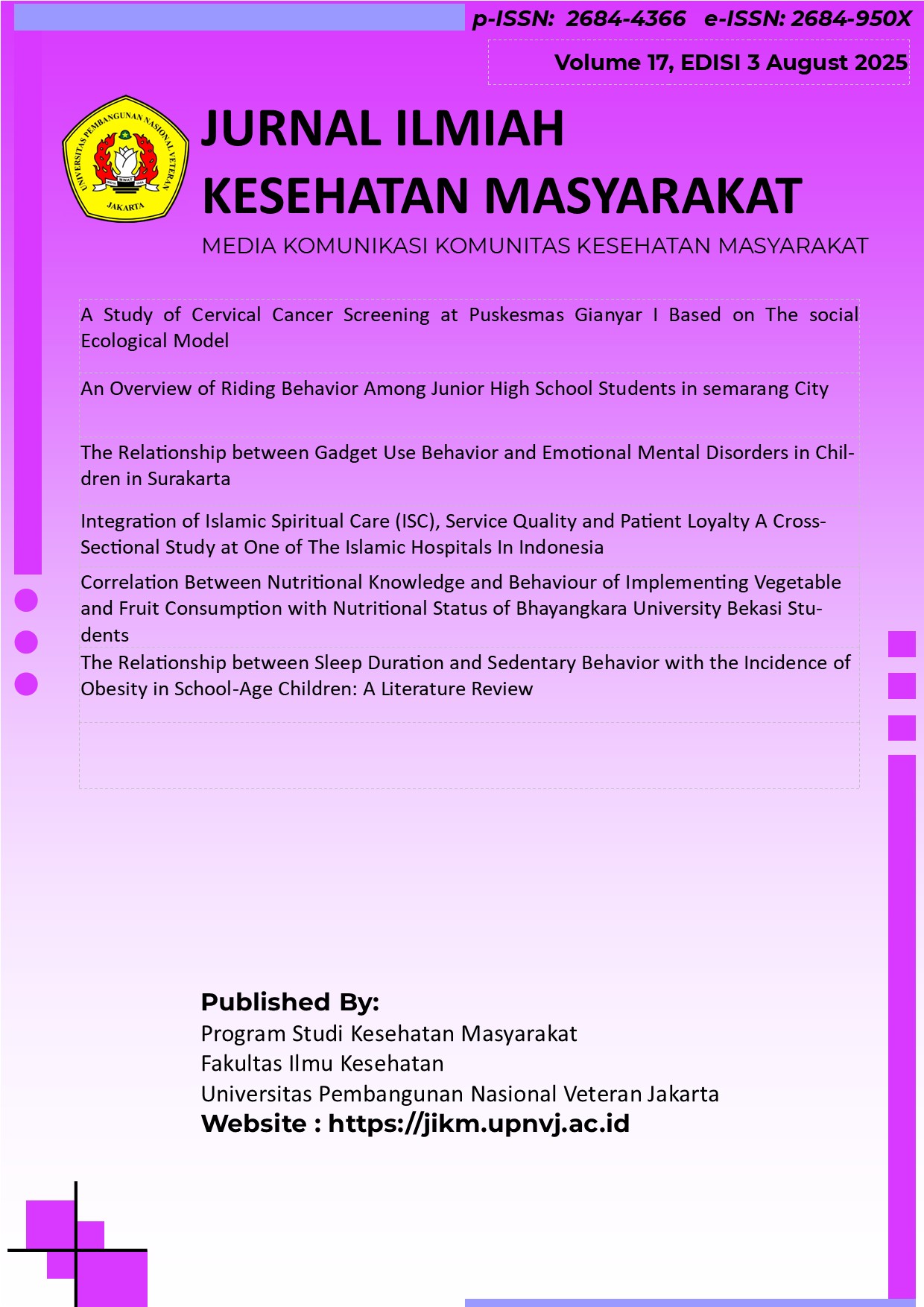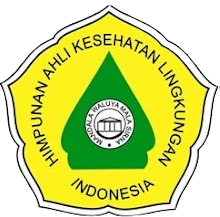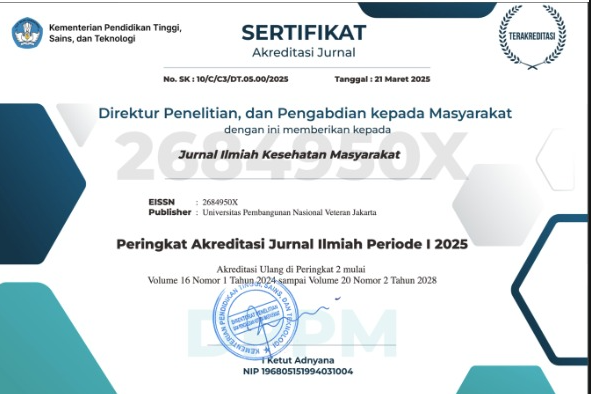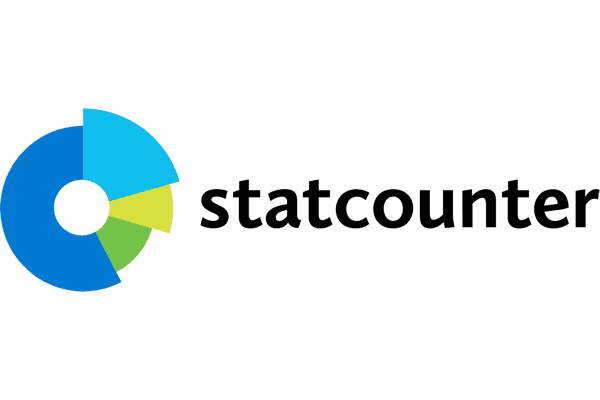A Study of Cervical Cancer Screening At Puskesmas Gianyar I Based On The Social Ecological Model
Abstract
Background: Cervical cancer is a leading cause of death among women, and early detection through screening is crucial to prevent its progression. Despite this, participation in screening programs remains low, including in Bali. This study explores factors influencing participation at five levels individual, interpersonal, community, organizational, and policy focusing on the screening program at Puskesmas Gianyar I.
Method: The study employed a qualitative approach through in-depth interviews and document analysis. Informants included healthcare workers, the head of the community health center, program coordinators for disease prevention, and patients who had participated in screening. Data were analyzed using thematic analysis to identify key themes aligned with the Social Ecological Model framework.
Results: Participation in cervical cancer screening is influenced by the Social Ecological Model. Individual barriers include fear and lack of knowledge, while family and community roles involve support, stigma, and social norms. Organizational challenges include limited facilities and inadequate training, whereas policies require subsidization supported by simplified procedures.
Conclusion: This study identifies barriers to cervical cancer screening participation, such as perceptions of being "healthy," stigma, and facility limitations. Promotional strategies are positive but require cultural approaches, enhanced training, and procedural simplifications.
References
Dewi RK. Hubungan Kepatuhan Menjalani Kemoterapi dengan Kualitas Hidup Pasien Kanker Payudara di RSUD Dr. Moewardi Surakarta. Jurnal Ilmiah Kesehatan Masyarakat: Media Komunikasi Komunitas Kesehatan Masyarakat. 2020 [cited 2025 Feb 19];12(4):158–63. Available from: https://jikm.upnvj.ac.id/index.php/home/article/view/118/73
World Health Organization. Cervical cancer. 2024.
World Health Organization. Global Cancer Observatory: All Cancers. 2024 [cited 2024 Jul 31]. Available from: https://gco.iarc.who.int/media/globocan/factsheets/cancers/39-all-cancers-fact-sheet.pdf
Kementerian Kesehatan Republik Indonesia. Peraturan Menteri Kesehatan Republik Indonesia Nomor 34 Tahun 2015 Tentang Penanggulangan Kanker Payudara dan Kanker Leher Rahim. 34 Jakarta, Indonesia: BN.2015/NO. 706, kemenkes.go.id: 11 hlm; 2015 p. 1–187. Available from: https://peraturan.bpk.go.id/Details/116060/permenkes-no-34-tahun-2015
Sumarmi S, Hsu YY, Cheng YM, Lee SH. Factors associated with the intention to undergo Pap smear testing in the rural areas of Indonesia: a health belief model. Reprod Health [Internet]. 2021 Dec 1 [cited 2024 Nov 21];18(1):138. Available from: https://reproductive-health-journal.biomedcentral.com/articles/10.1186/s12978-021-01188-7
Kementerian Kesehatan Republik Indonesia. Profil KesehatanIndonesia 2022. Jakarta: Kementerian Kesehatan Republik Indonesia; 2023. 1–550 p.
Senkomago V, Greek A, Jackson JE, Thomas CC, Richardson LC, Benard VB. Learning From Cervical Cancer Survivors: An Examination of Barriers and Facilitators to Cervical Cancer Screening Among Women in the United States. J Prim Care Community Health. 2021;12:1.
Srinath A, Van Merode F, Rao SV, Pavlova M. Barriers to cervical cancer and breast cancer screening uptake in low- and middle-income countries: a systematic review. Health Policy Plan. 2023 May 1;38(4):509–27.
Creswell JW, Creswell JD. Research design qualitative, quantitative, and mixed methods approaches. 5th ed. Los Angeles: SAGE publications, Inc; 2018.
Agustina RA. Strategi Komunikasi Twibling Rivalry Anak Kembar Kota Bandung (Studi Deskriptif Mengenai Strategi Komunikasi Twibling Rivalry Anak Kembar Dalam Meraih Prestasi). [Bandung]: Universitas Komputer Indonesia; 2018.
Robbers GML, Bennett LR, Spagnoletti BRM, Wilopo SA. Facilitators and barriers for the delivery and uptake of cervical cancer screening in Indonesia: a scoping review. Glob Health Action. 2021;14(1):1.
Roller MR. The In-depth Interview Method: 12 Articles on Design & Implementation. 2020. 1 p.
Wijaya MI, Pratiwi AE, Pradnyawati LG, Kartinawati KT, Juwita DAPR. The Social Ecological Model of Environmental Health in Tourism Destination Nusa Dua. Bali Medical Journal. 2024;13(2):16–24.
Crespo BV, Neira VA, Ortíz Segarra J, Andrade A, Guerra G, Ortiz S, et al. Barriers and facilitators to cervical cancer screening among under-screened women in Cuenca, Ecuador: the perspectives of women and health professionals. BMC Public Health. 2022 Dec 1 [cited 2024 Nov 21];22:2144. Available from: https://bmcpublichealth.biomedcentral.com/articles/10.1186/s12889-022-14601-y
Akinyemiju T, Ogunsina K, Gupta A, Liu I, Braithwaite D, Hiatt RA. A Socio-Ecological Framework for Cancer Prevention in Low and Middle-Income Countries. Front Public Health. 2022 May 26 [cited 2024 Nov 21];10:1. Available from: https://pmc.ncbi.nlm.nih.gov/articles/PMC9204349/
Sykes K, McGeechan GJ, Giles EL. Exploring the inequalities of women with learning disabilities deciding to attend and then accessing cervical and breast cancer screening, using the Social Ecological Model. Br J Learn Disabil. 2024 Sep 1 [cited 2024 Nov 19];52(3):538–48. Available from: https://onlinelibrary.wiley.com/doi/10.1111/bld.12587
Dawadi S. Thematic Analysis Approach: A Step by Step Guide for ELT Research Practitioners. Journal of NELTA. 2020 Dec;25(2):62.
Ayanto SY, Belachew Lema T, Wordofa MA. Women’s and health professionals’ perceptions, beliefs and barriers to cervical cancer screening uptake in Southern Ethiopia: a qualitative study. Sex Reprod Health Matters. 2023 [cited 2024 Nov 21];31(1):1–14. Available from: https://www.tandfonline.com/doi/full/10.1080/26410397.2023.2258477#abstract
Darj E, Chalise P, Shakya S. Barriers and facilitators to cervical cancer screening in Nepal: A qualitative study. Sexual and Reproductive Healthcare. 2019 Jun 1;20:20–6.
Hamdiui N, Marchena E, Stein ML, van Steenbergen JE, Crutzen R, van Keulen HM, et al. Decision-making, barriers, and facilitators regarding cervical cancer screening participation among Turkish and Moroccan women in the Netherlands: a focus group study. Ethn Health. 2022;27(5):1147–65.
Mabotja MC, Levin J, Kawonga M. Beliefs and perceptions regarding cervical cancer and screening associated with Pap smear uptake in Johannesburg: A crosssectional study. PLoS One. 2021 Feb 1 [cited 2024 Nov 21];16(2):1–13. Available from: https://pubmed.ncbi.nlm.nih.gov/33566798/









.jpg)








